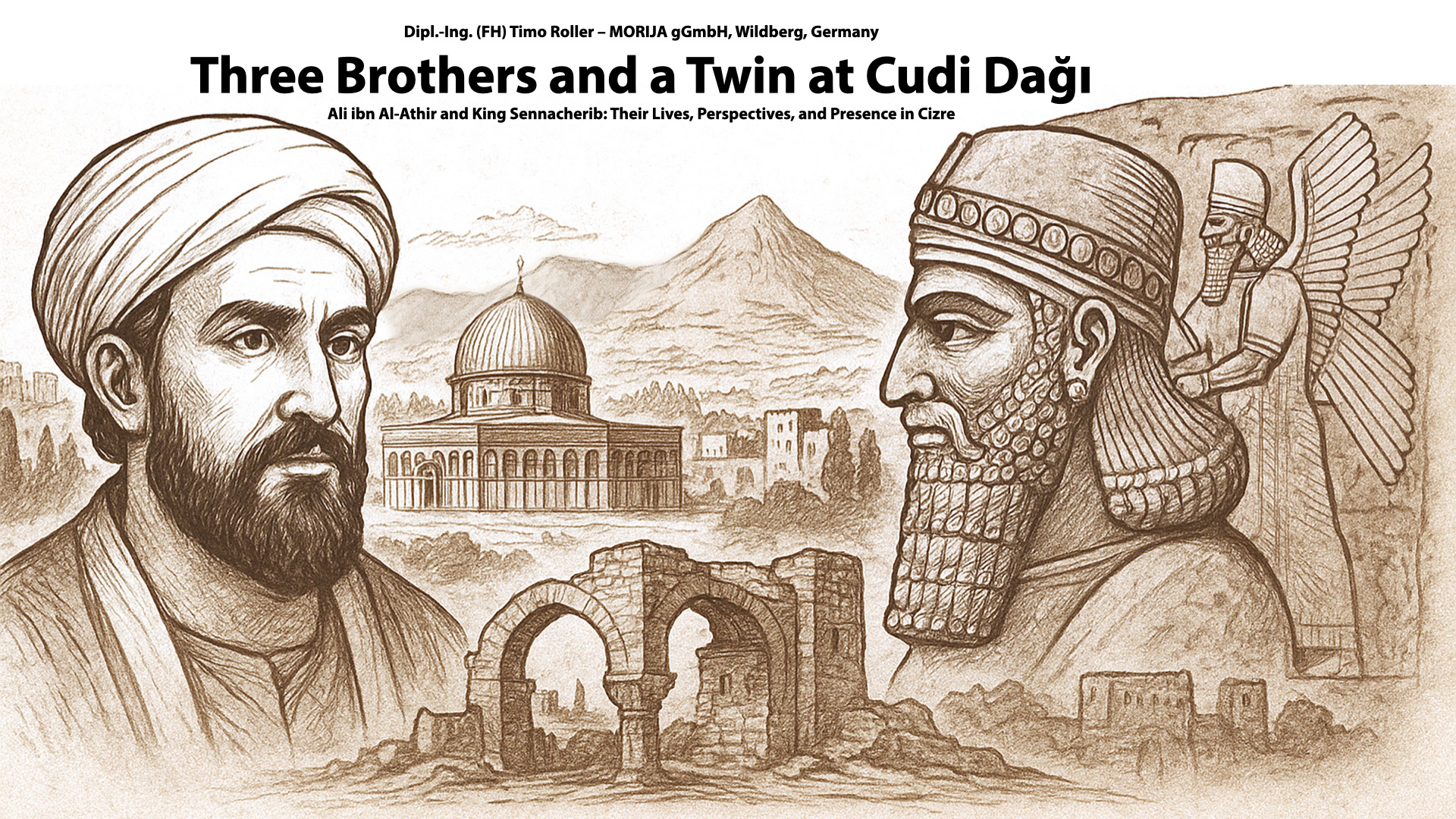Three Brothers and a Twin at Cudi Dağı
Lecture by Timo Roller about Ali ibn Al-Athir and King Sennacherib: Their Lives, Perspectives, and Presence in Cizre
4. November 2025

Ibn al-Athīr (1160–1233) is one of the most important Muslim historians of the Middle Ages. In his famous book The Complete History (al-Kāmil fī al-Tārīkh), he describes many events—such as the Crusaders’ capture of Jerusalem in 1099. His Arabic perspective has also been received in Christian countries and, for example, is compared to the account of William of Tyre—which reflects the Crusader viewpoint—in a teaching unit developed at the University of Bonn. Although the numerical data in these accounts are subject to critical examination, the comparative study of opposing conflict narratives is of great importance for historical research. Ibn al-Athīr was born in Cizre, in today’s Şırnak Province in southeastern Türkiye. He belonged to one of the most influential families of the time and had two brothers who also gained great significance. Most of his life, however, Ibn al-Athīr spent in the city of Mosul, where he also died.
Long before Ibn al-Athīr—almost 1,800 years earlier—another famous figure lived in the same region: the Assyrian king Sennacherib, whose military campaigns—especially those against Jerusalem—are documented in inscriptions and reliefs. Again, scholars are presented with divergent narrative traditions: biblical accounts on one hand, and Assyrian royal annals on the other. Here too, reported casualty figures are critically examined. Rock reliefs near Cizre (in the archaeological sites of Şah and Hassana) attest to Sennacherib’s presence in the region around Cudi Dagh, possibly in the context of early reverence for the mountain as the landing site of Noah’s Ark. The capital of the Assyrian Empire during his reign was Nineveh, the ruins of which lie within the modern city of Mosul.
This lecture introduces Ibn al-Athīr and Sennacherib as historical "twins"—connected through famous places, fascinating narratives of conquests, and spheres of religious significance. By comparing their perspectives on Jerusalem, Nineveh, and Cizre, the presentation offers a panoramic view spanning three millennia of history in the Fertile Crescent.
Timo Roller is author of the book »Das Rätsel der Arche Noah« and www.bibelabenteurer.de